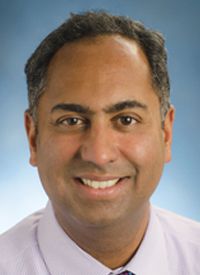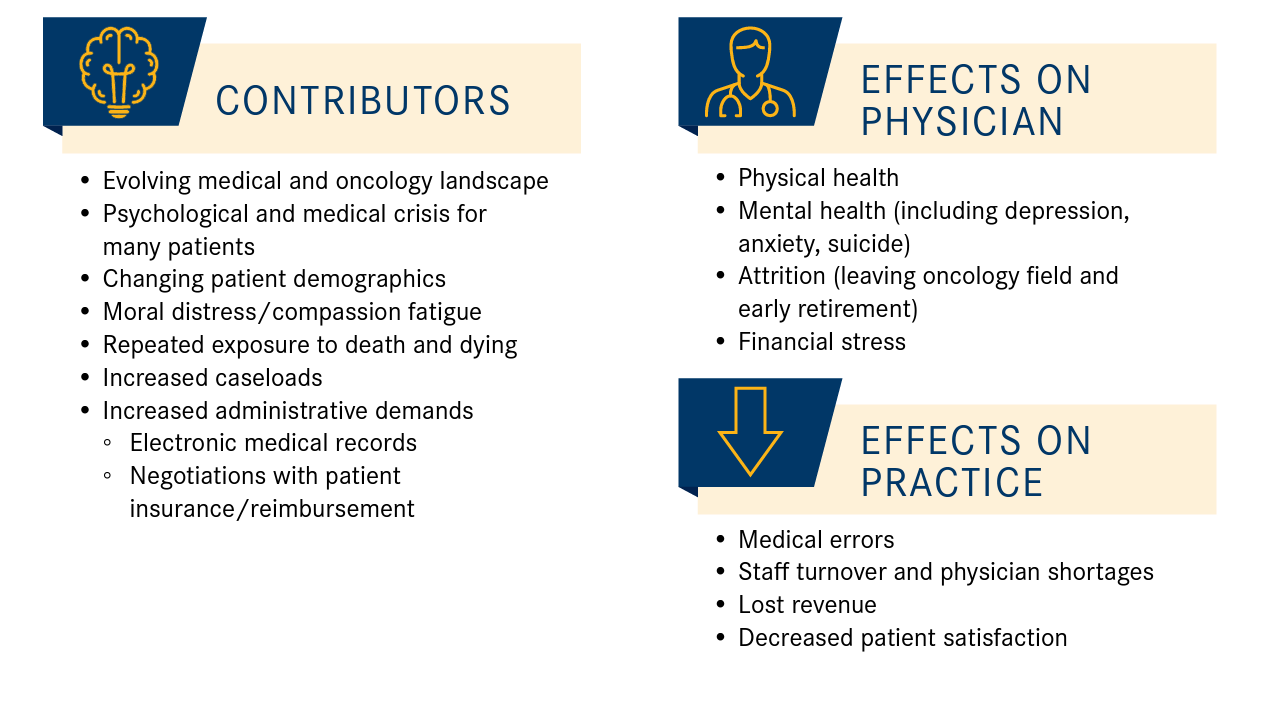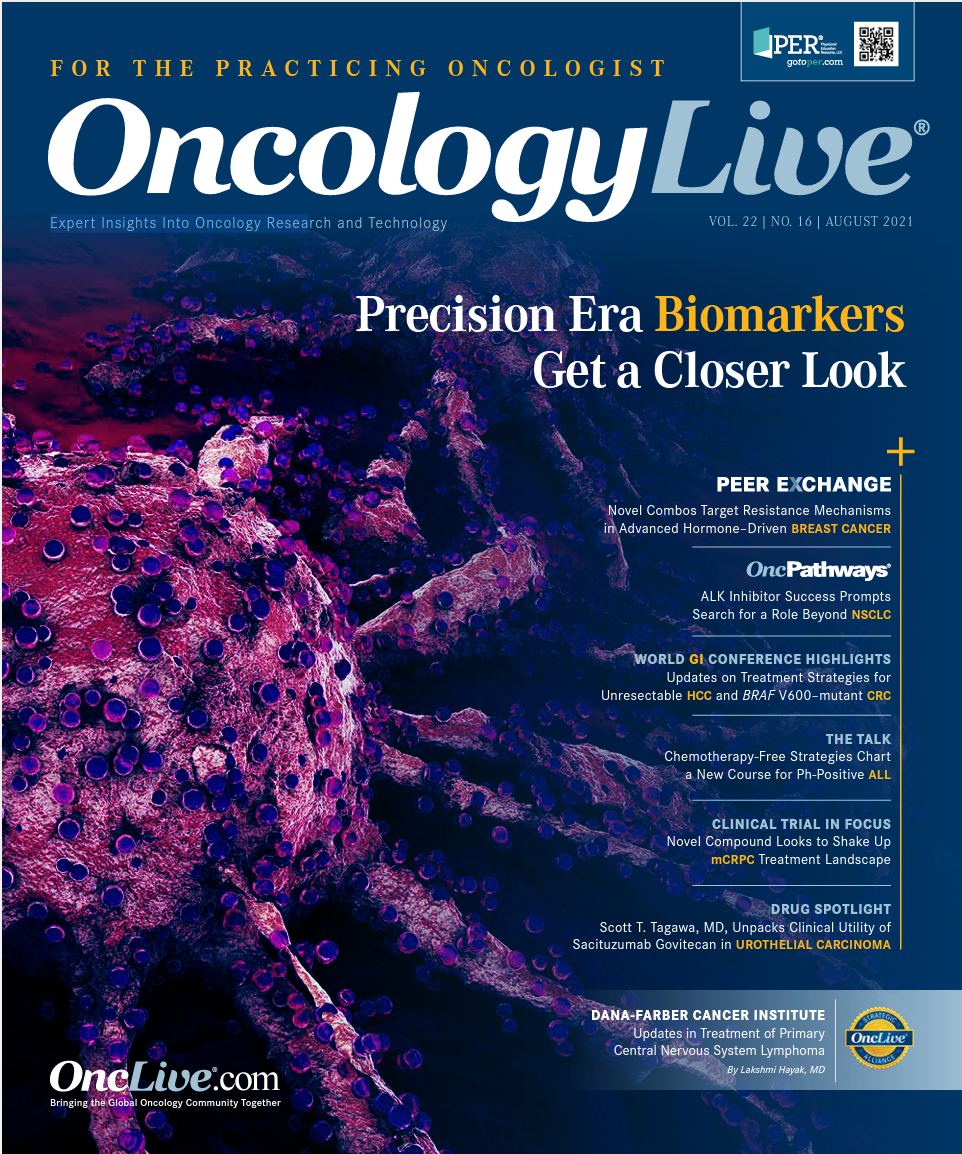Publication
Article
ASCO Roadmap Provides Path Forward for Clinician Well-Being
Author(s):
A collaborative initiative between the American Society of Clinical Oncology and the American Medical Association has the goal of improving well-being and reducing burnout by leveraging a quality improvement framework and model.
Piyush Srivastava, MD

Educational program aimed at implementing systemic-level changes may provide oncology care providers with the necessary tools to mitigate the increasing prevalence of burnout. A collaborative initiative between the American Society of Clinical Oncology (ASCO) and the American Medical Association (AMA) has the goal of improving well-being and reducing burnout by leveraging a quality improvement framework and model.1
Approximately 45% of medical oncologists who are members of ASCO have reported symptoms associated with burnout, including emotional exhaustion or depersonalization. Classified as an occupational-related condition by the World Health Organization, the most recent definition of burnout results from unaddressed chronic workplace-related stress.2
Turnover and early retirement are 2 consequences associated with burnout with organizational contributors being cited as the source of the problem. Circumstances specific to the oncology care space include exposure to patients and families in crisis during any point of the treatment process, ethically challenging situations, and potentially repeated encounters with limited treatment options and treatment failure (Figure2).
Figure. Oncologist Burnout: Cause and Effect2

“Many institutions and organizations across the country are realizing that burnout amongst clinicians is a true and serious phenomenon,” Piyush Srivastava, MD, said in a virtual presentation during the 2021 ASCO Annual Meeting. Srivastava is an oncologist at Kaiser Permanente Medical Group’s Walnut Creek Medical Center in California. “For many of us and for many of our employers, simply acknowledging that this is an issue affecting us as health care providers [is important] and [can lead to the] creation of an environment to address this awareness with intentional actions to address the problem.”
In a discussion of oncology care well- being, Srivastava noted 3 domains of influence that are essential to wellness: personal resilience, a culture of awareness, and efficiency of practice.
“Personal resilience [in this instance, refers to] the ability to individually cope with loss and grief and stress and the techniques typically used to aid in the coping,” he said. “A second domain is creating a culture of awareness or, specifically, individual and systemic factors established for well-being. And a third is efficiency of practice—or removing the pebbles in our shoes, which get in the way of taking care of our patients. Mostly, these are operational barriers.”
To address system barriers mitigating clinician well-being and increasing burnout, a quality training program focuses on providing training to oncology providers giving them the tools to design, implement, and lead successful quality improvement activities, with the goal of implementing initiatives at their institutions. Specifically, Srivastava discussed the ASCO quality training program, a 6-month comprehensive education and training initiative for multidisciplinary oncology teams.1
“The AMA provided burnout assessments to be used to measure baseline [stress] and to measure the possible affect tested solutions made,” he said. Additionally, the AMA aided in the evaluation of results, creating detailed reports of the findings. “ASCO faculty and coaches worked together to provide the knowledge base for quality improvement and guide the teams [toward] viable solutions.”
Training Lays the Groundwork for Change
Launched in 2019, the first ASCO quality training program centered on improving efficiency in practices. Teams focused on identifying systemic challenges that affect well-being and developed tactics to address these hurdles. Strategies were aimed at reductions in workload, increased patient-physician interaction and enhanced autonomy, with the goal of favorably affecting physician burnout.2
As part of the program’s design, the in-person and virtual training sessions provide interaction with improvement coaches, with opportunities for simulation exercises. The program is divided into 4 phases: prework, planning, implementation, and sustain/spread. A key component of the final phase according to Srivastava is the presentation of a plan to sustain developed solutions and collect data from these initiatives for continuous improvement.
“The [in-person] sessions for thematic burnout mitigation included interactive lectures developed by experts in quality improvement, physician wellness, and burnout with team-building activities, discussion and presentation of case examples, small group exercises addressing physician wellness and mitigating burnout, and presentations by each practice team of their plan,” Srivastava said.
The results of the quality training program provide a blueprint for key stakeholders to implement organization interventions. Objectives were divided into cognitive, affective, and psychomotor categories.
“For the cognitive or knowledge-based objectives, teams wanted to identify clinical and operational targets for practice improvement, but they also wanted to demonstrate understanding of how to use process analysis tools to improve on that, as well as describe and discuss effective approaches to engage their local stakeholders to improve practice efficiency,” Srivastava said.
Psychomotor objectives focused on developing strategic plans for operational performance improvements using data collected from tracking performance over time. The implementation of these tactics relied on the engagement of local stakeholders and leaders to support wellness activities.
The ASCO Roadmap
Although interventions aimed at addressing the root problems that enable burnout have been proven effective,3 dissemination of information, education, and reduction of stigma associated with mental health and burnout.
The 6-month training initiative builds on the increased efforts to bring to light the burdens affecting oncology practices from the ASCO Oncology Clinician Well-Being Task Force and includes a roadmap that provides a 5-year, goal-orientated mission to provide providers with a plan to build sustainable practices. The 3 goals of the program focus on improving the quality of cancer care through efforts that address an individual’s work-related and personal health–related environment, including organizational and psychosocial factors.4
The first aim of the organization is to engage clinician well-bring across ASCO activities, which includes promotion of educational and policy solutions as well as incorporating well-being initiatives in volunteer and professional development programs. The second goal focuses on addressing diversity, equity, and inclusion boundaries to broaden and diversify oncology clinician resources. The final goal centers on the promotion of research that highlights the understanding of oncology clinician well- being through the publishing and dissemination of information on burnout.4
“I believe that one of the biggest successes for the quality training program on burnout was the awareness of burnout as a real entity and the start of conversations addressing this as a real issue plaguing the oncology workforce,” Srivastava said.
References
- Srivastava P. Charting the course for oncology team well-being: the AMA and ASCO quality training burnout out program experience. Presented at: 2021 American Society of Clinical Oncology Annual Meeting; June 4-8, 2021; virtual. Accessed August 3, 2021. meetinglibrary.asco.org/record/193733/slide
- Hlubocky FJ, Shanafelt TR, Black AL, et al. Creating a blueprint of well-being in oncology: an approach for addressing burnout from ASCO’s Clinician Well-Being Taskforce. Am Soc Clin Oncol Educ Book. 2021;41:e339-e353. doi:10.1200/ EDBK_320873
- McFarland DC, Hlubocky FJ, Susaimanickam B, O’Hanlon R, Riba M. Addressing depression, burnout, and suicide in oncology physicians. Am Soc Clin Oncol Educ Book. 2019;39:590-598. doi:10.1200/EDBK_239087
- Oncology Clinician Well-Being Roadmap provides five-year plan to address provider burnout. American Society of Clinical Oncology. February 26, 2021. Accessed August 3, 2021. asco.org/practice-policy/policy-issues-statements/ asco-in-action/oncology-clinician-well-being-roadmap









